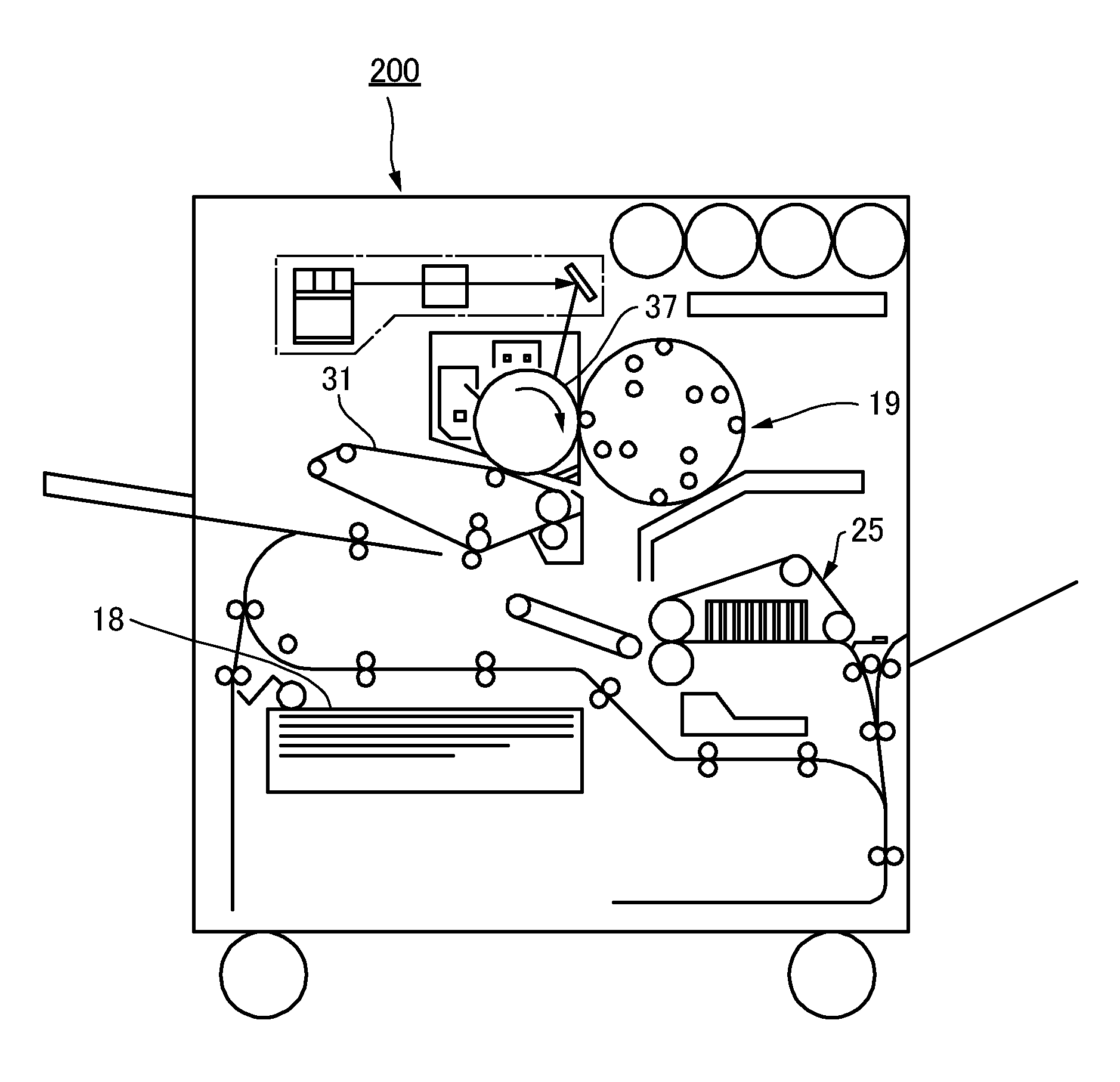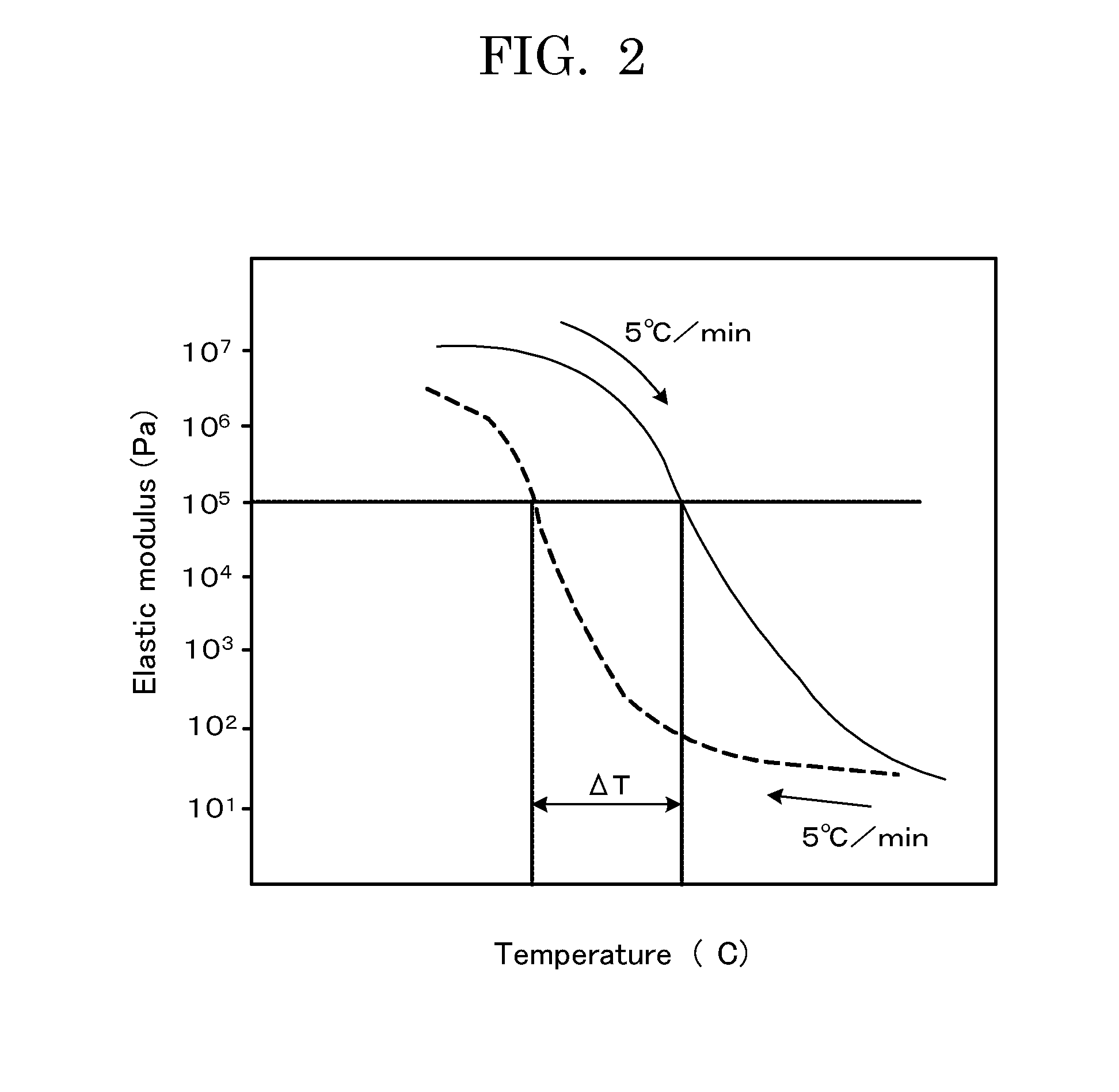Image recording material, method for producing the same, and image forming method
- Summary
- Abstract
- Description
- Claims
- Application Information
AI Technical Summary
Benefits of technology
Problems solved by technology
Method used
Image
Examples
synthesis example 1
Synthesis of Crystalline Polyester Resin (P-1)
[0423]First, 253.6 g of dodecanediotic acid, 95.2 g of ethylene glycol, 0.7 g of trimethylol propane and 0.11 g of tetra-n-butyltitanate were placed into a heat- and pressure-resistant glass container equipped with an agitator and heated at 235° C. for three hours to conduct an esterification reaction. Then, the system was gradually decreased in pressure to 13 Pa one hour later and supplied with nitrogen gas to return the pressure to a normal pressure three hours later. Then, 10.4 g of anhydrous trimellitic acid was added thereto and agitated for 1.5 hours to conduct a depolymerization reaction, thereby synthesizing a crystalline polyester resin (P-1).
synthesis example 2
Synthesis of Crystalline Polyester Resin (P-2)
[0424]First, 65.2 g of sebacic acid, 107.9 g of anhydrous succinic acid, 175.8 g of 1,4-butane diol, 11.0 g of trimethylol propane and 0.14 g of tetra-n-butyltitanate were placed into a heat- and pressure-resistant glass container equipped with an agitator and heated at 235° C. for three hours to conduct an esterification reaction. Then, the system was gradually decreased in pressure to 13 Pa one hour later and supplied with nitrogen gas to return the pressure to a normal pressure three hours later. Then, 9.9 g of anhydrous trimellitic acid was added thereto and agitated for 1.5 hours to conduct a depolymerization reaction, thereby synthesizing a crystalline polyester resin (P-2).
synthesis example 3
Synthesis of Crystalline Polyester Resin (P-3)
[0425]First, 253.6 g of dodecanediotic acid, 95.2 g of ethylene glycol and 0.12 g of tetra-n-butyltitanate were placed into a heat- and pressure-resistant glass container equipped with an agitator and heated at 235° C. for three hours to conduct an esterification reaction. Then, the system was gradually decreased in pressure to 13 Pa one hour later and supplied with nitrogen gas to return the pressure to a normal pressure three hours later. Then, 9.9 g of anhydrous trimellitic acid was added thereto and agitated for 1.5 hours to conduct a depolymerization reaction, thereby synthesizing a crystalline polyester resin (P-3).
PUM
| Property | Measurement | Unit |
|---|---|---|
| Temperature | aaaaa | aaaaa |
| Temperature | aaaaa | aaaaa |
| Temperature | aaaaa | aaaaa |
Abstract
Description
Claims
Application Information
 Login to View More
Login to View More - R&D
- Intellectual Property
- Life Sciences
- Materials
- Tech Scout
- Unparalleled Data Quality
- Higher Quality Content
- 60% Fewer Hallucinations
Browse by: Latest US Patents, China's latest patents, Technical Efficacy Thesaurus, Application Domain, Technology Topic, Popular Technical Reports.
© 2025 PatSnap. All rights reserved.Legal|Privacy policy|Modern Slavery Act Transparency Statement|Sitemap|About US| Contact US: help@patsnap.com



